What are Toxins in the Body?
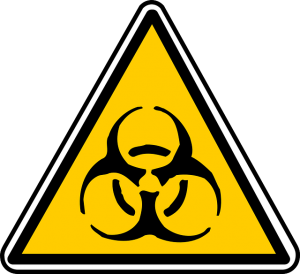
They can damage cells and organ systems throughout the body.
Have you ever wondered why your grandparents generation dealt with a lot less health issues than our generation? Have you wondered why more people have allergies, food sensitivities, migraines, fatigue, and more ongoing illnesses like diabetes, cancer, and other chronic illnesses?! One of the biggest reasons for this is TOXINS! Toxins can damage cells and organ systems throughout the body.
We are exposed to toxins from skin care products, household cleaners, plastics, household products, our outdoor air, our indoor air, and more!
Toxins at Birth
Babies today are born with over 200 -300 toxins in their bodies.
EWG did a study on this: Of the 287 chemicals we detected in umbilical cord blood, we know that 180 cause cancer in humans or animals, 217 are toxic to the brain and nervous system, and 208 cause birth defects or abnormal development in animal tests (EWG). Scarier yet, this test was only industrial chemicals and pollutants. There is still a bunch of other toxins they did not test for. Imagine now how many you have accumulated in your lifetime.
Chemical exposures in the womb are actually more harmful to a child than chemicals they will encounter later on in life. Because babies are still developing these toxins can more easily access organs and cause damage than with an adult. They can affect a child’s brain with easier access due to an immature, porous blood-brain barrier. Even if a baby doesn’t have health issues immediately after birth, these toxins can wreak havoc in adulthood and be passed down to future generations.
THIS MEANS EACH GENERATION IS BURDENED WITH MORE TOXINS THAN THE LAST
Every generation is born with a greater toxin load, and then is typically exposed to even more toxins than prior generations in their lifetime. Just in the last 50 years, food and cleaners have become even more processed. As I’ve mentioned in previous blogs, bread is more processed (why gluten sensitivity is common), more foods have the processed high fructose corn syrup ingredient, we now have GMOs, and fast food became more popular in the last 50 years. We have been seeing a lot more healthier options in the last 5 years, but changes are not happening quick enough.
We are exposed to 6 million pounds of mercury and the 2.5 billion pounds other toxic chemicals each year (Dr. Hyman).
The CDC reports the average American has traces of at least 29 different pesticides in their bodies.
The average person may come in contact with about 100 chemicals just getting ready in the morning. MANY ARE TOXIC!
Asthma, autism, attention deficit and hyperactivity disorders (ADD and ADHD), childhood brain cancer and acute lymphocytic leukemia have all increased over the past 30 years (EWG). Scientists are unsure, but toxins could be the cause of these increases.
Children’s Health in the Age of Hazardous Chemicals and Toxic Products
In this blog you will get an overview of how toxins damage the body, where toxins are found, how to reduce your exposure, and how to detox toxins already in the body.
When is Something Considered Toxic?
The only written regulation around the term comes from the Consumer Product Safety Commission (CPSC) who is the governing body that administers the Federal Hazardous Substance Act (CITE) They define a toxic product as one that ‘can produce personal injury or illness to humans when it is inhaled, swallowed, or absorbed through the skin.
How Do Toxins Damage the Body?
 Most toxins are fat soluble and end up stored in fatty tissues in our bodies like our brains, nerves, glands and yes, that extra layer around our tummies and thighs (Sandison). Our bodies hold onto toxins. Yes, some are flushed out because the body tries real hard to reach a homeostasis state. But the body is overburdened. Plus, toxins actually make the detox process harder.
Most toxins are fat soluble and end up stored in fatty tissues in our bodies like our brains, nerves, glands and yes, that extra layer around our tummies and thighs (Sandison). Our bodies hold onto toxins. Yes, some are flushed out because the body tries real hard to reach a homeostasis state. But the body is overburdened. Plus, toxins actually make the detox process harder.
Toxins can damage your DNA making you age faster, damage organs, weaken bones, damage enzymes that are needed for body functions, your neurological health (can cause brain fog), metabolic health (they can cause fatigue), endocrine (thyroid, adrenals, sex hormones), immune health (virus, fungal, bacterial infections), digestion (leaky gut, food intolerances, malabsorption).
Most people with ongoing health issues probably have a heavy toxin load. However, you don’t have to have a present diagnosed health issue to feel the effects of too many toxins in your body. You could just have low energy, frequent headaches, aches/pains, be bloated, have constipation, frequent gas, or even mood swings due to a toxin overload.
Common Places to Find Toxins
1. Toxins in Skin Care Products
The average person may come in contact with about 100 chemicals just getting ready in the morning. Many of which contain toxic ingredients.
After I switched to more natural products there was no going back! After maybe a year of more natural products, I tried a chemical face cleanser that led to itchy and burning skin. I realized my body had become immune for years to some nasty chemicals, toxic stuff.
There are toxins in everyday products (not just random brands, popular toxins are found in most brands, and most definitely highly commercialized brands): lotions, body soaps, hand soaps, face wash, shampoo, conditioner, shaving cream, deodorant, toothpaste, hair gel, hair spray, perfumes, chapstick, makeup, and the list goes on…
One of the worst cancer causing ingredients is parabens. The FDA has acknowledged several studies that claim parabens can cause breast and skin cancer and decreased sperm count (health one family medicine). Parabens have also been known to disrupt hormones and lead to reproductive issues. But parabens are still a common ingredient in many products on the shelves. I found it in a bunch of my everyday skin care products.
This is a difficult thing to digest. I mean how could our government let these products line our shelves if they are not safe?
Find out more about these toxic, bad ingredients in skin care products: what are they?, why are they toxic?, what does the FDA do?, what health issues do they cause?, history, and scientific studies. READ MORE HERE: DANGER! Toxic Ingredients in Skin Care Products
How to Replace Dangerous Skin Care Products
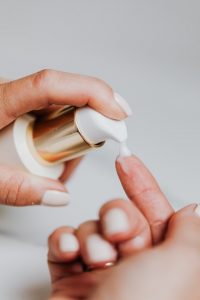 Should you trust natural labels? organic? nontoxic? I cover all these things in my blog on replacing skin care products.
Should you trust natural labels? organic? nontoxic? I cover all these things in my blog on replacing skin care products.
One of the best resources is EWG – Environmental Working Group. They have been around since 1993 tracking the safety of chemicals, and pushing for safer products to help people nationwide. Their Skin Deep search database ranks products on a scale from 1 to 10. A scoring of 1 is amazing and 10 is horrendous.
What Should You Look for When Shopping?
1. Look for Natural/Organic aisle. If your store has one start there!
2. Look for EWG certified products. Be aware of what it looks like, it can be a really small label. However, some products are not labeled with the certification, but still rank very low in toxicity.
3. Download the EWG App and scan products. See what ranking the product has from 1 to 10. (Not all products will be listed, but they do have a lot in their database).
4. Review labels and ingredients. Usually less toxic products are labeled with things such as “made without… sulfates, dyes, parabens, phthalates, and no synthetic fragrance.” The high quality brands will sound less like a science experiment. They usually have ingredients such as plant extracts, essential oils, flower extracts, herbs, etc. Without any sort of certification though, there is no guarantee the product is completely safe. This is because sometimes companies won’t list all their ingredients.
How to Find DIY Recipes
DIY skin care can save you money, if you have the time!
If you want to try any DIY products, I would recommend checking out DIY Natural. She has it ALL on her website! There are lotions, face masks, face washes, toothpaste, eyeliner, hair spray, mouth wash, soap, massage oils, etc. She has some crazy simple recipes for those who are not big on DIY, and more complex recipes for those who are really into DIY.
In my blog, I cover what to look for when switching to nontoxic skincare products, how to buy in store, buy online, DIY concepts, product recommendations, and some more toxic things to be aware of for different products. View: How to Replace Dangerous Skin Care Products
2. Indoor Air Toxins & Chemical Cleaners
 Your house could be making you sick. Indoor air is often 5x more polluted than the air outside!
Your house could be making you sick. Indoor air is often 5x more polluted than the air outside!
Who decided that it was a good idea to utilize chemicals for everyday cleaning that we need gloves and safety masks to use? When I was younger I used to think, they can’t be that bad if we are using them regularly in our homes. Because of that, I didn’t always use gloves with my cleaners when I should have been.
A 20-year longitudinal study conducted by scientists at the University of Bergen in Norway has found that using cleaning products can be as harmful as smoking 20 cigarettes a day (Detrick, 2018). More on the details of the study here.
Indoor air pollution is linked to respiratory problems, asthma, lung cancer, heart disease, nervous system disorders, hormone imbalances, birth defects, reproductive problems, allergies, and more.
Examples of Dangerous Chemicals
Some of the worst offenders are fragrances which often contain petroleum. They go to the bloodstream and cause allergies, birth defects, cancer, nervous system disorders, and respiratory illnesses. There is a good chance of a respiratory illness or another infection from even indirect exposure to bleach. Kids and pets lungs are even smaller and their immune systems are not equipped to handle the toxic fumes. Oh and most people don’t follow the instructions on how to use bleach correctly!
Bleach isn’t the only problem! Antibacterial cleaning wipes have something called quats. Too much exposure to quats can cause microorganisms called superbugs which are resistant to important antibiotics.
Other Popular Indoor Air Pollutants include cigarette smoke, candles, mold, radon, building materials/furnishings, and products from hobbies that can create toxic fumes in the air.
Find out more about the problems with chemical cleaning products, dangerous toxins to avoid and the products they are in, what the government does about it, and what indoor air pollution to worry about beyond chemical cleaners. VIEW BLOG HERE.
Air Quality Solutions and Replacing Chemical Cleaners
Find out how to test the quality of your indoor air, indoor air quality solutions, how to make natural cleaners, and how to purchase the best cleaners.
What are Air Pollution Solutions?
I used to suffer from really bad allergies so I have done almost all of thing things listed below, and my allergies did improve. I think adding the UV light to the furnace made the biggest difference. However, we already did all these other things.
- Air Filters – Use a High MERV rating. The higher the MERV rating the better the filter is at trapping particles.
- Add a HEPA Filter to your vacuum. This will help with removing pollen, dust mites, and pet dander.
- Use an air purifier. This helps sanitize the air removing harmful chemicals.
- Use a humidifier to help with mold and mildew.
- Test for mold, radon, and carbon monoxide.
- Clean Vents. Vents look dirty? Have them professionally cleaned. We did this, our vents were really bad.
- Have a professional clean your carpets naturally.
- Add a UV Light in your furnace – We have one! Germicidal or UV lights for HVAC systems are used to kill the DNA of germs, viruses, mold spores, bacteria and fungi as they pass through the air handler system (Reliable Heating & Air). A UV light can kill close to 100% of harmful pollutants.
- Diffuse essential oils into your air (as I mentioned in previous blogs).
- Open all the windows in your house once in awhile to let all the fresh air circulate.
- Purchase some indoor plants. There are many great plants that are known to clean the air and help people who struggle with allergies. 26 best air purifying plants for the home.
DIY Replacements for Chemical Cleaners
Unlike body care products, making your own cleaners is crazy simple, takes minutes, and is usually cheaper than the chemical cleaners you are paying for.
Did you know vinegar works well for cleaning most things? Vinegar may already be present in some of your cleaners. Vinegar is not only a disinfectant but it is awesome at breaking down grease, grime, and dirt.
3. Toxic Products
 Your kitchen is one of the places you can be exposed to a large number of toxins! There are a lot of dangerous toxins hiding in cookware items, storage items, utensils, and more.
Your kitchen is one of the places you can be exposed to a large number of toxins! There are a lot of dangerous toxins hiding in cookware items, storage items, utensils, and more.
Plastics are one of the most common items found in the kitchen, and yet also one of the most dangerous. BPA (Bisphenol A) is one of those dangerous toxins found in plastics. Research in humans has linked even low-dose BPA exposure to cardiovascular problems, including coronary artery heart disease, angina, heart attack, hypertension, and peripheral artery disease (Medical News Today, 2021). One study shows that 95% of us have BPA in our bodies at this very moment.
In addition to kitchen items, BPA can also be found in children’s toys, electronic components, medical devices, safety helmets, sunglasses, etc.
It took 78 years for the government to propose any restrictions on BPA!
BPA is not the only dangerous thing found in plastics. Phthlates are also known to be endocrine disruptors and have been linked to respiratory problems, neurodevelopment issues, and allergies in children.
Over time, I have slowly replaced products in my kitchen to minimally use plastic. Approximately 80% of the products I share from Amazon I have either purchased from Amazon or bought in the store.
Problems with Non-Stick Cookware
Non-stick cookware has a chemical coating called Teflon. Teflon has a compound called C8 or perfluorooctanoic acid. Many research studies have shown that C8 disrupts normal hormone function and may also lower testosterone levels in men. Many products also contains polytetrafluoroethylene or PTFE. These chemicals can lead to birth defects, infertility, thyroid disorder, liver disease, kidney disease, and testicular cancer. These chemicals are even found in babies because they are passed to them in the womb.
Find out more about the history, more details on the dangers, and products to use replace these things with here: Choosing Safe Cooking Utensils.
4. Outdoor Toxins
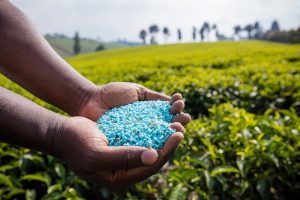 Pesticides are One of the Most Dangerous Toxins!
Pesticides are One of the Most Dangerous Toxins!
The CDC reports the average American has traces of at least 29 different pesticides in their bodies.
Not too long ago, CDC found toxic weedkiller in 87 percent of 650 children tested! They had detectable levels of toxic herbicide glyphosate in their urine.
Synthetic Fertilizers
Synthetic fertilizers are actually pretty new, they were introduced between 1950-1970. Many of these products contain ammonium sulfate which can cause respiratory problems, nitrogen which can lead to problems with reproductive organs and the urinary system, heavy metals which cause all sorts of problems, and are also hazardous to the environment.
Find out about other pesticides to avoid, ideas for replacement products, and how to plant your own garden without pesticides here: Outdoor Toxins – What’s in your yard?.
4. Avoiding Pesticides in Your Food & PROCESSED FOODS
5. Water
How clean your water is will ultimately depend on where you live, but tap water can contain all sorts of bad contaminants in it including lead from pipes, fluoride (linked to brain development issues), and chlorine. Chlorine is deliberately added to the US water supply to kill germs and pathogens, but when it mixes with other organic compounds it can create a few harmful byproducts (Bendix, 2019).
Even well water can cause problems. It can be contaminated with pesticides, manure, and debris from the wind. Other dangerous contaminants that have been found in water include copper, arsenic, radioactive substances, PFOA’s (linked to kidney & testicular cancers & colon ulcers), Perchlorate (brain-damaging), nitrate, manganese, mercury (damages nervous system & kidneys).
Find out how to test your water and make changes here: How to Increase Water Intake & Choosing Clean Drinking Water
Detoxing Toxins
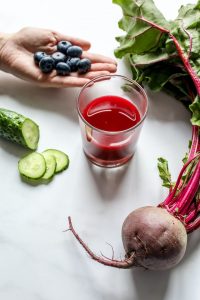 You know how I mentioned children being born with more toxins than prior generations? Okay I’m not going to say something scary like this without mentioning what can be done. I know some natural practitioners that will test your toxin load and may help you to do some detoxing. They will also give you a safer diet than you will get from a primary care physician to ensure you are passing along a smaller toxin load to your child.
You know how I mentioned children being born with more toxins than prior generations? Okay I’m not going to say something scary like this without mentioning what can be done. I know some natural practitioners that will test your toxin load and may help you to do some detoxing. They will also give you a safer diet than you will get from a primary care physician to ensure you are passing along a smaller toxin load to your child.
You also have to manage your stress so that the body can properly detox. When your body is in “fight or flight” the body interprets that as danger. What Is the Fight-or-Flight Response? Your body releases hormones when stressed to prepare you to either fight the situation or run away from it. Our bodies enter this “fight or flight” when stressed because it is an inherited survival mechanism from our ancient ancestors.
If your body gets stuck in this “fight or flight” response too long it can wreak havoc on your health. When people get sick with a cold or flu, it is often related to the body being under too much stress. I love how Food Revolution explains it, “Detoxing when the body needs all its energy to escape from a predator would be like insisting on mopping the floor while a tornado bears down on your house (Robbins, 2019).“
DETOXING DOESN’T HAVE TO BE A CRAZY DIET!
I have tried many different detox methods from meal plans, to fasting, chelation, and even an Ayurveda detox. So I know what it’s like to be on a strict diet, feel lethargic, tired, and moody. I’m not a huge fan of these detox methods, but I can say that with health issues like chronic constipation, fatigue, digestive issues, they can be worth it.
BUT what else is there if you just want to be healthier and not feel like crap?
There are foot detoxes, HOCATT, steam rooms, and saunas. You can also naturally detox at home with baths, exercise, and food. Obviously, natural detox methods are not going to pull as many toxins from the body, but changing your diet long-term and incorporating more exercise into your lifestyle can be a HUGE game changer.
Check out some of the best foods for detoxing, teas, juices, and even meals on my blog: Methods to Detox Toxins Including Detoxing Naturally
It is also important to note: Nothing is more toxic than people. If you are trying to avoid all these products, but you are spending your time with people who are a toxic influence, like they stress you out frequently, and it is causing you chronic stress, that is more likely going to cause a chronic health issue than any product you put on your skin, breathe in, or consume. How Relationships Influence Our Health (in multiple ways) & Our Success
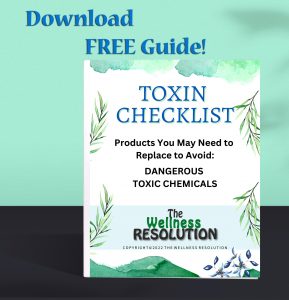
Download this Free Guide:
TOXIN CHECKLIST
(Products to Replace)
View All Blogs on Toxins
DANGER! Toxic Ingredients in Skin Care Products
How to Replace Dangerous Skin Care Products
Indoor Air Toxins & Chemical Cleaners
Air Quality Solutions and Replacing Chemical Cleaners
Toxic Products in Your Kitchen & Choosing Safe Cooking Utensils
Outdoor Toxins – What’s in your yard?
Methods to Detox Toxins Including Detoxing Naturally
Resources
Robbins, Ocean. (2019, January 11). Food Revolution Network/12 Detoxifying Foods to Help Cleanse Your Body Naturally. Retrieved from: https://foodrevolution.org/blog/detoxifying-foods/
EWG/Body Burden: The Pollution in Newborns. (2005, July 14). Retrieved from: https://www.ewg.org/research/body-burden-pollution-newborns#:~:text=In%20a%20study%20spearheaded%20by,of%202004%20in%20U.S.%20hospitals
Hyman MD, Mark. Dr. Hyman/Is There Toxic Waste In Your Body?. Retrieved from: https://drhyman.com/blog/2010/05/19/is-there-toxic-waste-in-your-body-2/
Kristina. FORCE of NATURE/TOXIC CHEMICAL GLOSSARY: Non-Toxic vs Toxic Free: What Do These Terms Even Mean?. Retrieved from: https://www.forceofnatureclean.com/non-toxic-vs-toxin-free-what-do-these-terms-even-mean/
NORTH COUNTY NATURAL MEDICINE/HOW DO I KNOW IF I’M FULL OF TOXINS?. Retrieved from: https://www.northcountynaturalmedicine.com/know-im-full-toxins/
healthONE Family Medicine/Common Skincare Ingredients that Are Linked to Cancer. Retrieved from: https://www.healthonemedicine.com/blog/common-skincare-ingredients-that-are-linked-to-cancer#:~:text=Parabens,cancer%20and%20decreased%20sperm%20count.
Detrick, Hallie. (2018, February 19). FORTUNE/Using Household Cleaning Products Can Be as Bad as Smoking a Pack a Day. Retrieved from: https://fortune.com/2018/02/19/cleaning-products-cigarettes-lung-health/
RELIABLE HEATING & AIR/UV Light for HVAC: Do they Work?. Retrieved from: https://reliableair.com/blog/uv-lights-for-hvac#:~:text=Germicidal%20or%20UV%20lights%20for,percent%20of%20these%20harmful%20pollutants.
Brazier, Yvette. (2021, May 23). MEDICAL NEWS TODAY/How does bisphenol A affect health?. Retrieved from: https://www.medicalnewstoday.com/articles/221205
Formuzis, Alex. (2021, July 30). EWG/Bayer to end residential sales of cancer-causing weedkiller glyphosate by 2023. Retrieved from: https://www.ewg.org/news-insights/news-release/2021/07/bayer-end-residential-sales-cancer-causing-weedkiller-glyphosate
Cherry, Kendra. (2022, November 7). verywellmind/What is the Fight-or-Flight Response?. Retrieved from: https://www.verywellmind.com/what-is-the-fight-or-flight-response-2795194
Bendix, Aria. (2019, July 5). INSIDER/11 terrifying things that could be lurking in your tap water. Retrieved from: https://www.businessinsider.com/toxic-chemicals-tap-drinking-water-2019-4#chlorine-in-drinking-water-may-not-sound-terrifying-but-it-can-expose-people-to-a-parasite-that-causes-diarrhea-cramps-and-nausea-5
I have a Wellness Coach Certificate, I'm an entrepreneur, an innovator, writer, and artist. My expertise includes over 7 years of marketing, research, and developing content for holistic health businesses. Plus, my own personal journey of becoming chronically sick: understanding what went wrong, and finding a way to heal and live a healthier life. I have a passion for wellness with a wealth of knowledge surrounding: wellness, flaws in healthcare, root causes for chronic illnesses, and alternative treatments.

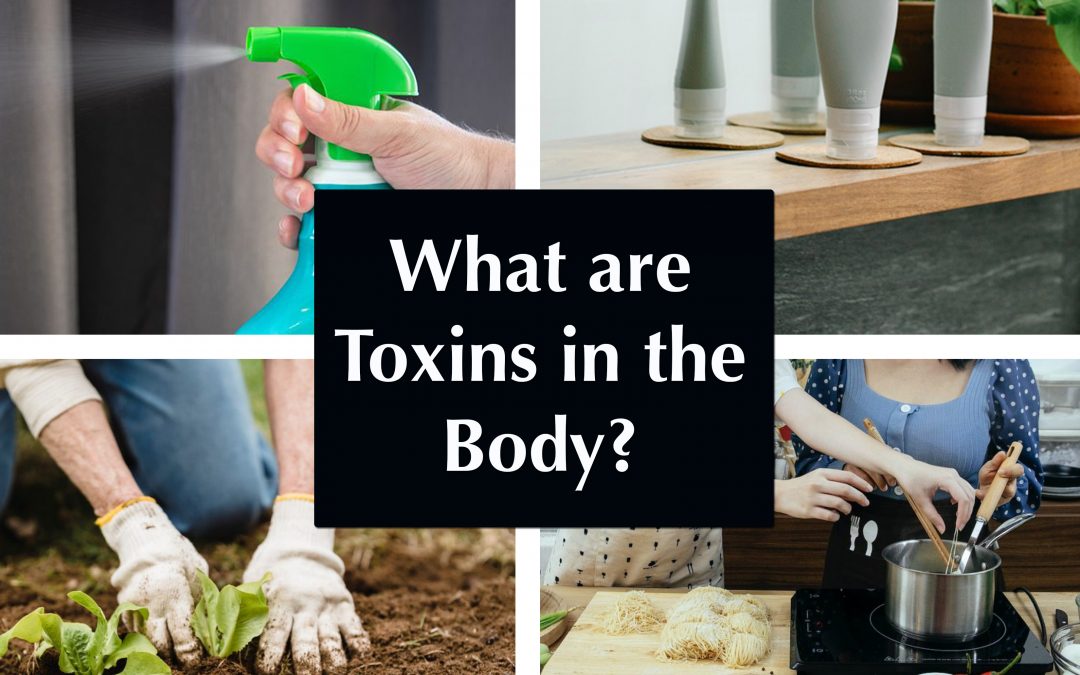

Thx